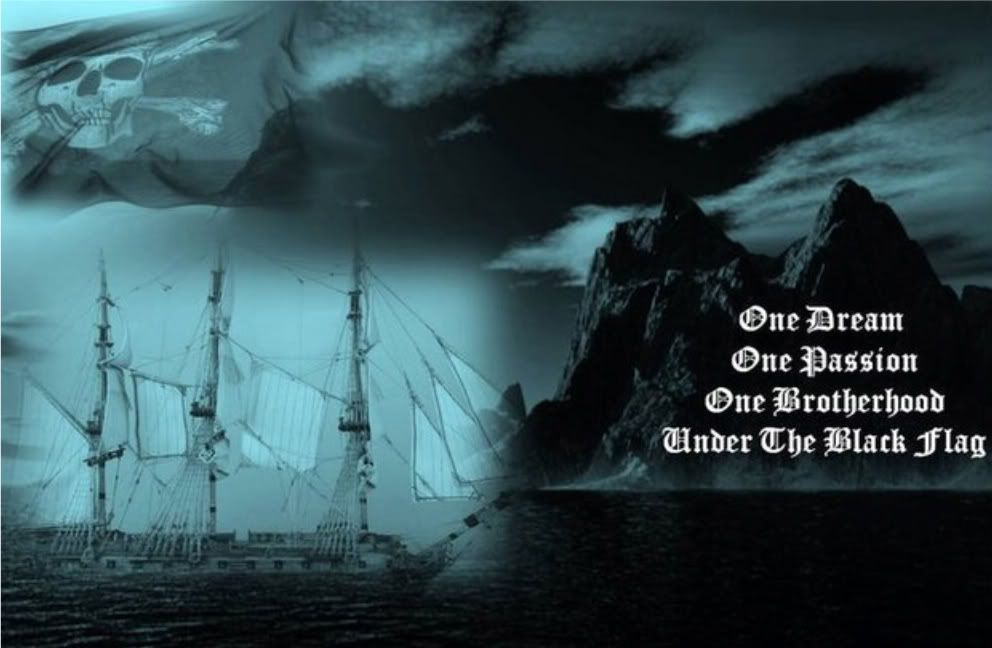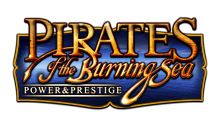Captain Robert Surcouf
biographies, Captain Robert Surcouf 2:51 π.μ.
Robert Surcouf (12December 1773–8 July 1827) was a famous French corsair. During hislegendary career, he captured 47 ships and was renowned for his gallantry andchivalry, earning the nickname of Roi des Corsaires ("King ofCorsairs").
Robert Surcouf was born12 December 1773 in Saint-Malo, afortified town in Brittany,traditionally a corsair stronghold. He attended a religious school and waseducated by the Jesuits. At 13, heescaped his teachers and stole a small craft to prove his ability to sail; hewas subsequently caught in a tempest and had to be rescued.
At age 15, he enlistedon a merchantman to India.
In 1792 he came back toSaint-Malo and discovered the political changes France had undergone in thewake of the French Revolution. He sailed to Île deFrance (present-day Mauritius) in Auguston a commercial brig, and wasinformed on his arrival of the outbreak of war against Britain. Île de France was blockaded by two British ship: the50-gun HMS Centurion, and the44-gun HMS Diomede, commanded by Commodore Osborn. Surcoufwas made a second officer of the 40-gun frigate Cybèle, which, with 32-gunfrigate Prudente and brig Coureurengaged and repelled the attackers. Surcouf was one of the heroes of the day.
He was made a captainin Île de France, and expressed his ambition to wage corsair warfare againstGreat Britain. However, the Convention frowned at privateers,and it was difficult to obtain a letter of marque.
On 3 June 1794, Surcoufsailed with the 4-gun ship La Créole, with a complement of 30 men, withorders to bring rice to Mauritius, and encountered three English ships escortedby the 26-gun Triton; he used a technicality to engage combat inself-defence, by not flying his colours until the English ships requested themby firing a warning shot (a naval convention of the time), which Surcouf laterreported to consider an aggression. After a brief gunnery exchange, the Britishships lowered their flag and were brought back to Mauritius, with their cargoof rice and maize. Surcoufwas welcomed as a saviour in the famished Port Louis. Thecapture was declared legal, but in the absence of a letter of marque, theauthorities retained the entire cargo (a portion of which normally goes to thecorsair).
Following a disputewith the governor of Île de France, Surcouf sailed to France to receive his letter of marque. Hereturned to sea in Nantes in August1798, as captain of the 18-gun Clarisse, with 105 men. He captured fourships in the South Atlantic, and two others near Sumatra in February 1799. On11 November, the 20-gun Auspicious was captured, with a cargo worth inexcess of one million francs. Surcouf later had to flee before the 38-gunfrigate HMS Sybille, throwing eight gunsoverboard to out-sail the British warship. He captured a British brig and anAmerican merchantman before returning to Île de France.
In May 1800, Surcouftook command of Confiance, a fast 18-gun ship from Bordeaux undergoingrepairs in Île de France.
Beginning in March, heled a brilliant campaign which resulted in the capture of nine British ships.On 7 October 1800, in the Bay of Bengal, off Sand Heads, Confiance metthe 38-gun Kent, a 820-ton[1] East Indiaman, underCaptain Robert Rivington, with 400 men and a company of naval riflemen. Despitebeing outnumbered three to one, the French managed to seize control of the Kent.He became a living legend in France and, in England, a public enemy whosecapture was valued at 5 million francs, although he was noted for thediscipline of his crew and his humane treatment of prisoners.
On 13 April 1801,though chased by British warships, he arrived in La Rochelle. He settledin Saint-Malo, married,and spent six years in retirement as a businessman.
In 1803, at thebreaking of the Treaty of Amiens, FirstConsul Napoleon Bonaparte personally offered himthe title of captain and command of afrigate squadron in the Indian Ocean. Surcouf, however, refused, for tworeasons: first, he would not have been allowed to operate as independently ashe desired; and second, he believed that the naval war against England shouldbe waged by commerce raiding rather than by direct naval assault and squadrontactics. In 1805, Napoleon did opt for a blockade againstEngland rather than direct confrontation, and allowed privateers to operatewith relative impunity. Surcouf left in good terms, and was made officer of theLégion d'Honneur on 18 July 1804.
In 1804, Surcouf wentinto business as ship-owner, and equipped 14 privateers in the Indian Ocean(among them his brother Nicolas Surcouf and hiscousin Joseph Potier). Their achievements,however, were somewhat less impressive than Surcouf's own: four of the corsairswere captured by British warships, and 5 campaigns turned a deficit.
In 1807, a Britishvessel captured Nicolas Surcouf. On 2 March, Surcouf returned to sea on aspecially built three-master, the 20-gun Revenant. Revenant was constructed under specialdirectives by Surcouf himself, with a completely coppered hull, and aremarkable (for the time) top speed of 12 knots.
Surcouf arrived at Îlede France in June, defeating the British blockade and capturing several shipson the journey. During the subsequent campaign, which was to be his last,Surcouf captured 16 British ships, partly because British ships tended strike their colours as soon asthey realised their opponent was Surcouf. He returned to Île de France inFebruary 1808. He then decided to stay on the island, leaving the campaign tohis second-in-command (and cousin) Joseph Potier. In two campaigns, thelatter captured about 20 ships, including the large 34-gun Portuguese Conceçao.
The governor of Île deFrance, General Charles Decaen, seized theRevenant for the defence of the island. After a heated argument withDecaen, Surcouf acquired the frigate Sémillante, renamed her Charles,and sailed her back to France. In the meantime, Decaen had confiscated allSurcouf's possessions in the Indian Ocean. In October 1808, the Revenant(renamed Iéna) was captured by a British warship and renamed Victor.She was retaken two years later by the frigate Bellone, under captainDuperré, and kept the Victor name. She later took part in the Battle of Grand Port.
On 4 February 1809, Charlesarrived in France with an 8-million-franc cargo. Surcouf was received byNapoleon and made Baron d'Empire, and his possessions were returned tohim.
In 1812, Surcoufobtained his last privateer, the Renard ("Fox"), a14-gun cutter. She wascommissioned under captain Leroux-Desrochettes, and fought a bitter battle on 9September against the British 16-gun Alphea. Alphea exploded,taking all hands with her, while Renard sustained 33 casualties,including her captain, over a crew of 46.
In January 1814,Surcouf was made a colonel in the National Guard of Saint-Malo. However, hetook no part in the Hundred Days as a chiefof Legion. After the war, he returned to Saint-Malo, rich and with the title ofbaron, and becamea merchant ship-owner, establishing business with Terre-Neuve, the Caribbean, Africa,and the Indian Ocean.
He died on 8 July 1827,and was carried to his grave by sea on a flotilla of over 50 sailboats.













